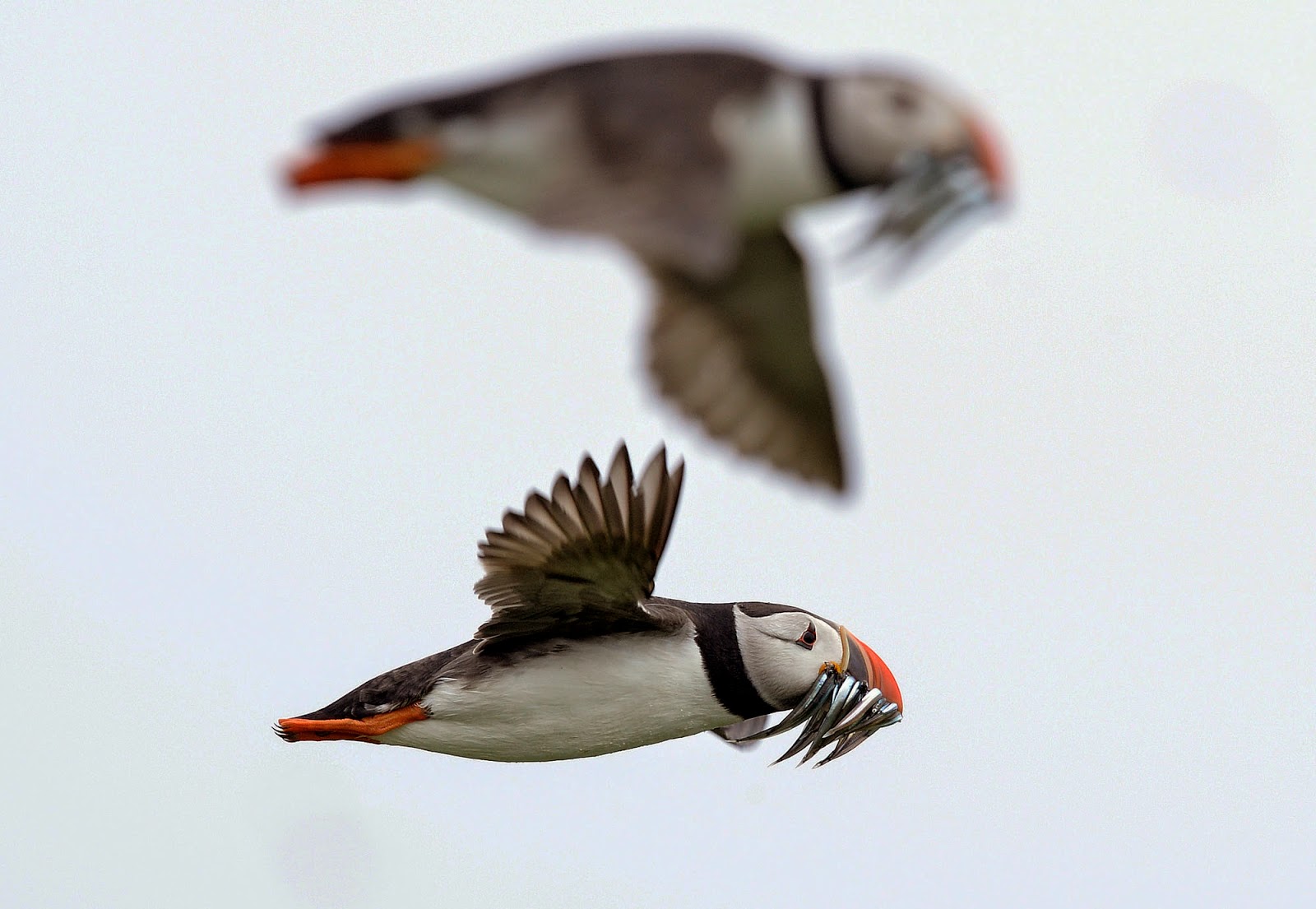 |
| Credit and Copyright Nigel Roddis, www.nigelroddisphotography.co.uk |
The Puffin is one of the country's favourite birds and there are few better places to see them up close than on the Farne Islands. The ever popular bird is a firm favourite with our visitors, offering endless great photo opportunities in the height of the breeding season. But how much do you know about our colourful friend?
The Puffin is unmistakable; once seen, never forgotten. With its beautiful markings, strikingly coloured bill and almost comic gait it is a bird that has endeared itself to millions. Though often known as a Sea Parrot, locally in Northumberland, the bird is known as a "Tommy Noddy". It is a member of the Auk family, alongside Gullemots and Razorbills - also present on the islands. Males and females look almost identical with the male often being slightly larger. With over half of the UK population at just a handful of sites, The National Trust's care and management of the Farne Islands is critical to their ongoing breeding success. They are an Amber listed bird species highlighting the risk their populations are potentially under. (Rare birds are nationally categorised under a Red, Amber, Green system of designation, according to their level of conservation concern). In 2014 we recorded 39,962 pairs of Puffins on the Farnes, level with the previous year. Puffins live longer than you might think, many in excess of twenty years. Some Puffins around the country have been recorded at ages of over thirty years old.
 |
| Credit and Copyright Nigel Roddis, www.nigelroddisphotography.co.uk |
Each year, the Puffins return to the Farnes to breed. This is generally between April and late July with the peak breeding season being in May and June. For the remainder of the year, the birds fly out to sea, overwintering on the water, only returning to land each year for a short window to breed and raise their young. It is while out on the water, that they shed their brightly coloured bills, in favour of a dull grey winter bill colouring. But, as spring approaches, the vibrant colours return and, by the time they settle on land again, the bill is clear again for all to see. It is on, and in, the water though that Puffins, like many seabirds, gain their agility. On land they might appear awkward or clumsy, but on their home territory, the water, their evolutionary development shines. Underwater, while steering with their feet, the Puffin's wings become flippers, propelling them to depths at great speed in their quest for the next meal.
In the following clip, filmed off the Farnes in 2014, photographer Jack Perks captures a rare insight into what is happening beneath the waves around the islands. In peak season, beneath the surface of the North Sea, tens of thousands of birds are active in their search for food, particularly sandeels, a key staple of the seabirds' diet. The health of the sea around the islands and the marine environment is crucial to the well being of the bird colonies. Their success is reliant upon a healthy sea providing a rich and plentiful diet.
Copyright and Credit Jack Perks, www.jackperksphotography.com
Every five years our Ranger team will undertake a full census of the Puffins, counting their numbers to help monitor growth or decline on the colony. This information is fed into national data sets that help monitor the country's wider population.
 |
| Credit and Copyright Nigel Roddis, www.nigelroddisphotograpghy.co.uk |
The Puffin nests in rabbit-like burrows. These are clearly visible as you walk around Inner Farne or Staple Island. The peaty ground is burrowed out to create a chambered hollow below ground in which a single egg will be laid.
Early in the season, as the Puffins return to the islands, they make a start cleaning their burrows of any accumulated materials, making a fresh abode for the months ahead. It is in here, that a single "Puffling" will hatch and grow. Incubation is normally around forty days, the chick developing over a period of a further forty days or so. The Puffling won't leave the nest until it is ready, awaiting the moment it will see the world for the very first time as it emerges with its parents for an often clumsy waddle down to the water's edge, and its first introduction to the water, its future home.
A Puffin preparing its nest below ground. Copyright The National Trust
The next few weeks are the ideal time to visit the islands and see the Puffins' story unfolding. Visiting information is available by clicking the Farne Islands link, at the top of the page. Just by visiting, you help support the vital work our team undertake on the Farne Islands to protect one of the country's most important seabird colonies. And don't forget, if you get any great pictures on your trip, you can share them with us on Twitter at @NTFarneIslands and @Northumb_Coast
Special thanks to Nigel Roddis for image permissions (www.nigelroddisphotography.co.uk), and Jack Perks (www.jackperksphotography.co.uk) for the underwater clip.















